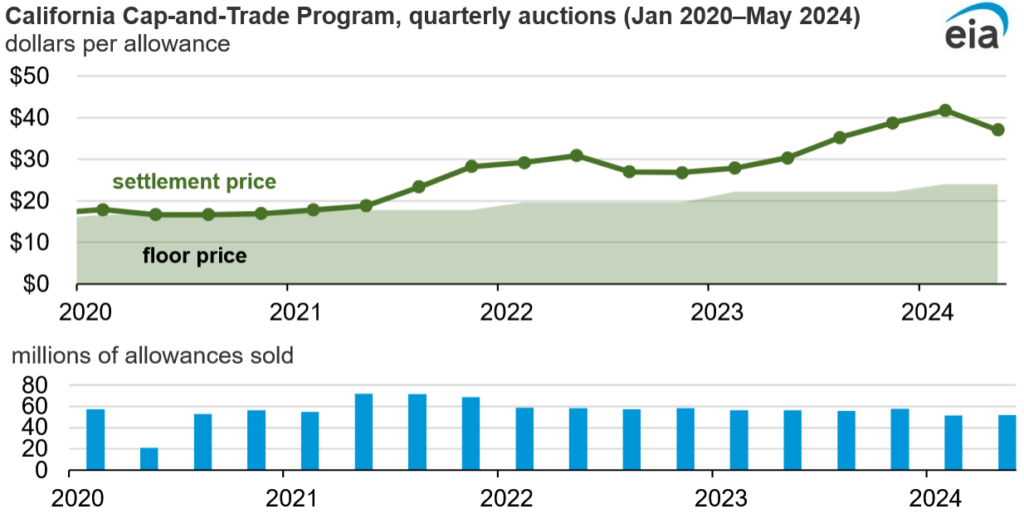Prices for greenhouse gas emission allowances experienced an 11% decrease in California’s May 2024 joint carbon auction.
This decline breaks the recent upward trend and comes amid uncertainty regarding potential regulatory changes to the state’s Cap-and-Trade Program.
The Mechanics of California’s Cap-and-Trade Auctions
The auctions are a key component of California’s strategy to reduce greenhouse gas emissions, as mandated by the California Air Resources Board (CARB).
Entities like power plant operators and other businesses must purchase allowances to offset their emissions.
Each year, the number of allowances available at auction decreases, creating scarcity and driving up prices. In the latest auction, all 51.6 million allowances offered were sold.
Cap-and-Trade: A Tool for Emission Reduction
The Cap-and-Trade Program was established under California’s Global Warming Solutions Act of 2006 (AB 32), with the initial goal of returning greenhouse gas emissions to 1990 levels by 2020.

This target was achieved ahead of schedule in 2016. Subsequently, lawmakers have set even more ambitious goals, including an 85% reduction below 1990 levels and achieving carbon neutrality by 2045.
The program sets a statewide limit on emissions from sources responsible for the majority of California’s greenhouse gas output. In 2021, the electric power sector accounted for 10.9% of these emissions.
How the Auctions Work
CARB generates allowances equal to the permissible emissions, setting a cap that gradually declines each year. The regulator also establishes a minimum price, or floor, for the allowances, which rises annually.
Companies must hold allowances equal to their emissions, which can be acquired through allocation, quarterly auctions, or from other market participants.
The combination of a rising floor price and decreasing allowance availability is designed to encourage investment in less carbon-intensive technologies and fuels, as well as more efficient energy use.
Price Fluctuations and Regulatory Uncertainty
While allowance prices had been steadily increasing since February 2023 due to factors like post-pandemic economic recovery and expectations of stricter regulations, the recent auction saw a reversal.
This is attributed to uncertainty surrounding CARB’s ongoing development of amendments to the Cap-and-Trade regulations.
The state’s 2045 emissions reduction target necessitates a decrease in available allowances, but regulatory updates have been delayed. Additionally, the potential linkage with Washington State’s carbon market further adds to the uncertainty.